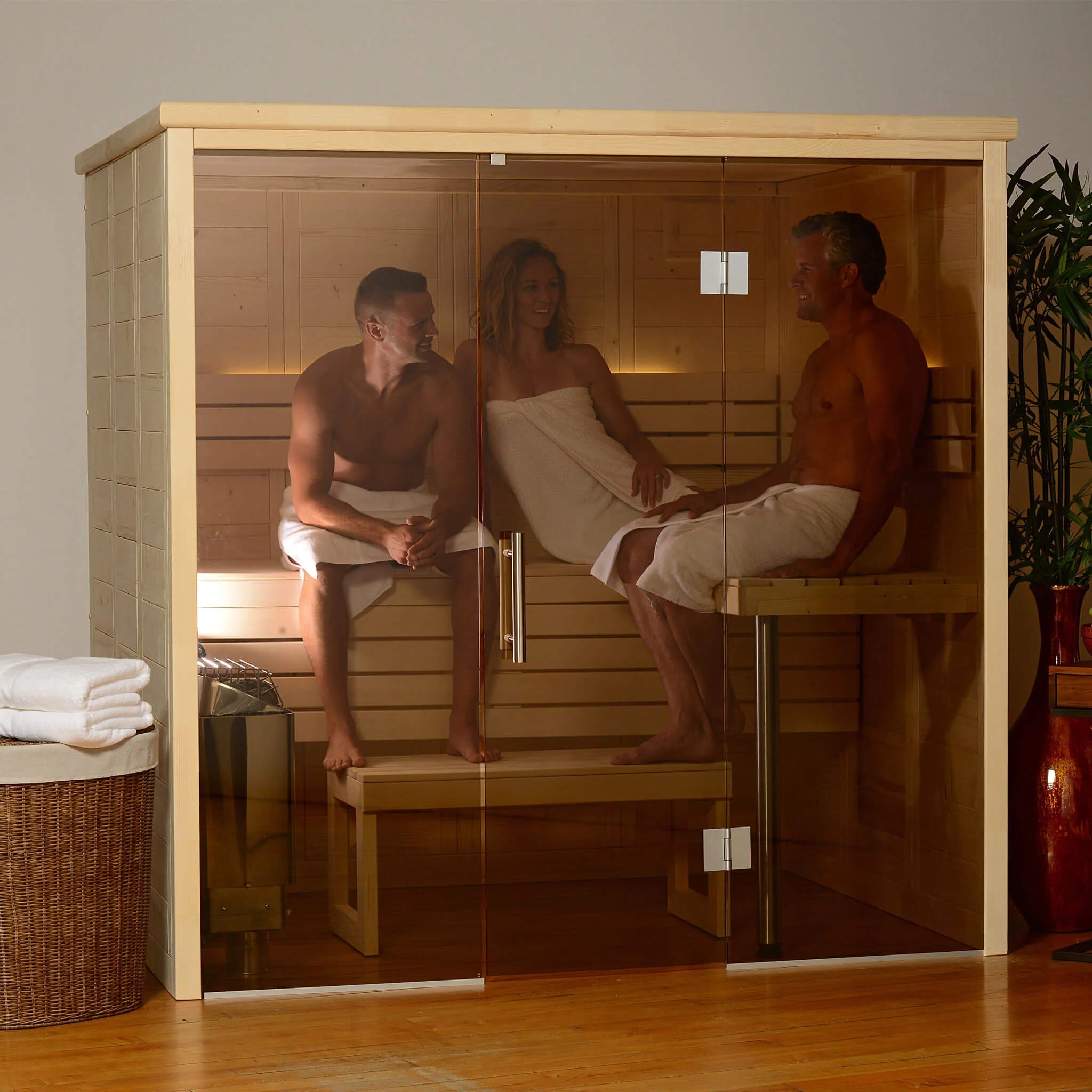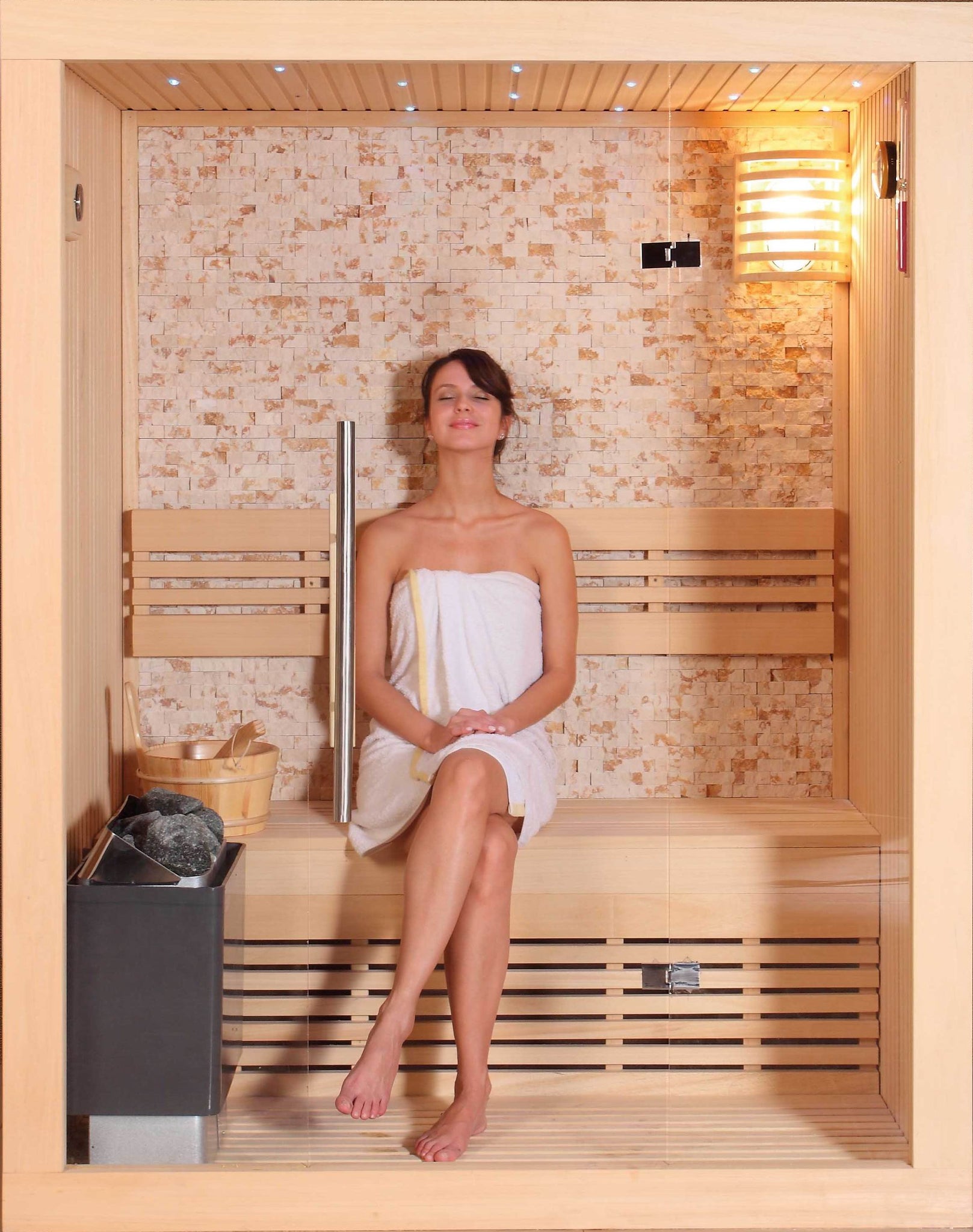Some Known Factual Statements About Traditional Sauna
Table of ContentsEverything about Traditional SaunaThe smart Trick of Traditional Sauna That Nobody is Talking AboutSome Known Incorrect Statements About Traditional Sauna The 15-Second Trick For Traditional SaunaLittle Known Questions About Traditional Sauna.
A lot of the weight shed in a sauna is water loss and is re-gained upon rehydrating. Without a question sauna can be a crucial component of a healthy and balanced weight loss program. To check out the differences between traditional and IR saunas, I will certainly divide these into verifiable, theoretical, and fabricated differences.Hence, the hottest point in the saunawhich goes to the ceiling directly above the sauna heateris commonly in between 185 and 190 F. Claims that a typical sauna exceeds 200 F is simply not true and not appropriate for electric saunas marketed in the US. The temperature for a far-infrared sauna is typically set in between 120 and 140 F; nevertheless, unlike the standard sauna, the goal in and IR room is not to achieve a high temperature.

When a standard sauna has been properly heated up, the sauna walls are cozy, the air temperature has actually achieved set temperature level and the rocks are super heated. As a fascinating side note, the heated wall surfaces and the rocks are releasing far-infrared warm, combined with the warmed air, to develop an "covering warm".
The 6-Second Trick For Traditional Sauna
When the heat is attained, the elements cycle on and off to preserve the heat. A lot of typical sauna users enjoy pouring water over the rocks to produce vapor to elevate sauna humidity degrees. The advantages of pouring water over the rocks consist of: making the room extra comfortable, moistening the nasal flows, and allowing the usage of aromatherapy by blending important oils with the water.

When the energy gets in the body, it causes the body temperature to boost and eventually leads to perspiration. In an infrared sauna it is very important for the emitters/heaters to remain on almost constantly. Considering that there is no mass of rocks to preserve heat, the sauna will certainly cool down if the emitters shut off.
The smart Trick of Traditional Sauna That Nobody is Talking About
As discussed above, the sauna bather in an infrared area intends to position himself before running emitters pop over to this site to obtain maximum gain from the warm. The heating time for the two areas can be very various, relying on exactly how the spaces are used. For a typical sauna, a bather needs to permit 30-40 mins for the area to achieve a preferred temperature and to correctly pre-heat the rocks.

A well created sauna will commonly accomplish a temperature level of 150-160 F in regarding 30-40 mins. For hotter temperatures, the room may need to heat for a longer duration.
To some, 15 minutes was "squandered" while the infrared energy heated the wood panels as opposed to warming i was reading this a body, while others find a pre-heated room to be a lot more comfortable and think a raised beginning temperature level is needed to begin sweating. The length of recommended usage for each space is about the very same (10-15 minutes per session); nevertheless, due to the reduced air temperature levels and the ability to really feel the effects of infrared warmth faster than a typical sauna, it is not unusual for a person to invest a total of 20-30 mins in an infrared sauna.
An Unbiased View of Traditional Sauna

The average cost per kWH of electricity in the united state is about $0.11, so a 4.5 kW heater will set you back roughly $.50 to compete one hour, if the heating unit runs continuously for one hour. Usually a sauna heating unit will run for 75% of the very first hour and 50% of succeeding hours on since the components cycle once the set temperature level is attained.
A two person far-infrared area is typically physically smaller sized than a traditional sauna, typically regarding 4' x 4' or smaller. The IR heating unit is generally 1.5-1.7 kW making use of a 120 volt straight from the source 15 amp plug-in solution. Considering that the room can be used earlier than a sauna room, we will certainly think the area is utilized for to of an hour consisting of warm up time.
There is a rarely reviewed difference in the social experience in between the 2 rooms. While our culture has actually lost several of the social benefit of the typical sauna experience, it can be extremely socially gratifying (Traditional Sauna). From family time in the sauna, to heart-felt discussions with substantial others, to sauna partiesthe traditional sauna experience can cause intimate socializing
Examine This Report on Traditional Sauna
Many higher end infrared spaces consist of colored light therapy, noise systems and full-glass fronts.